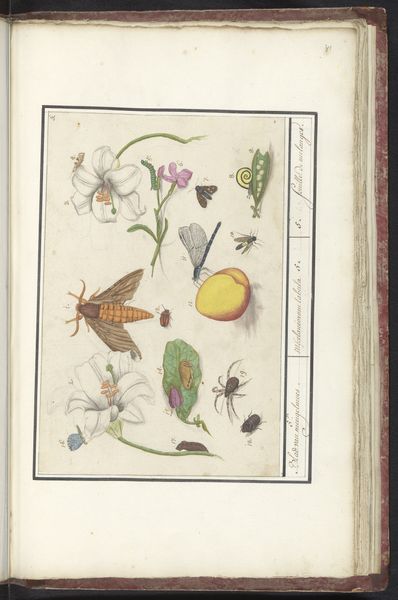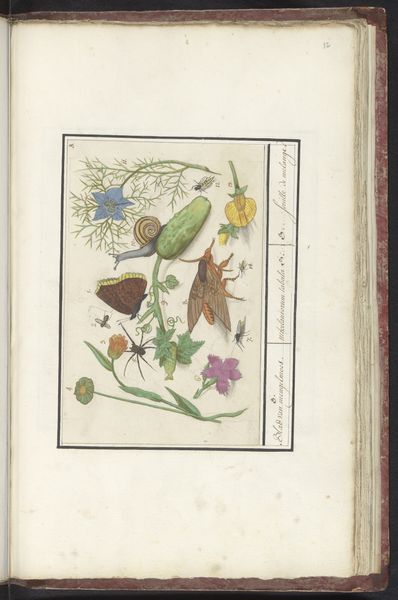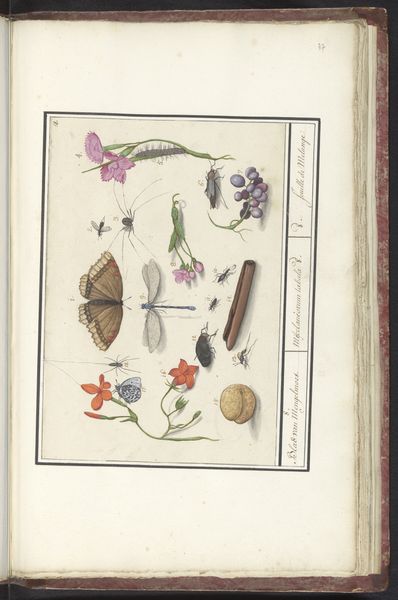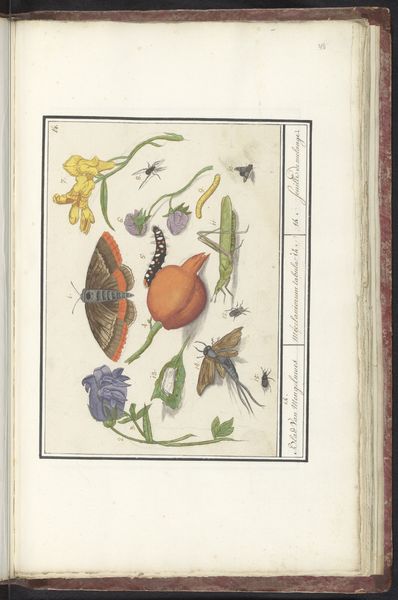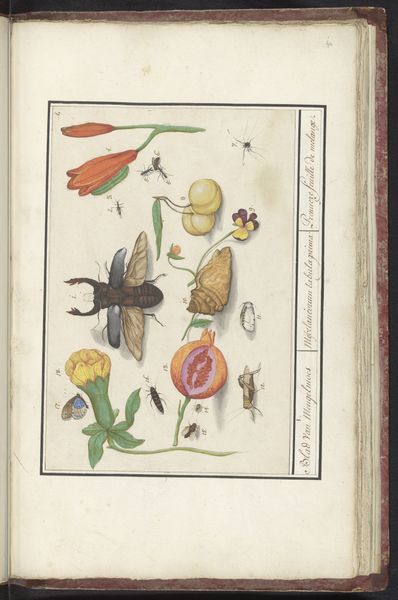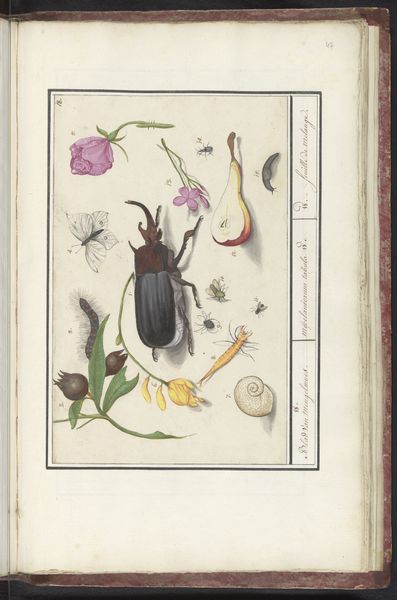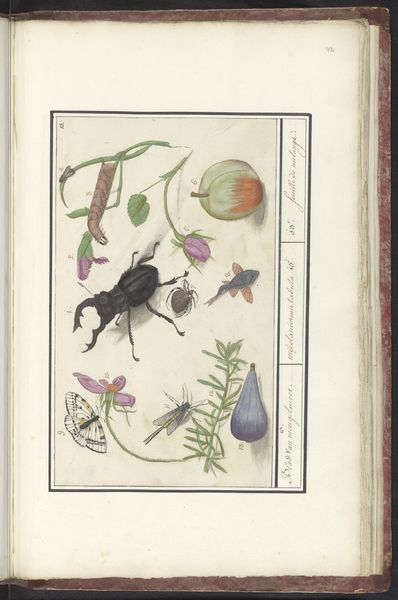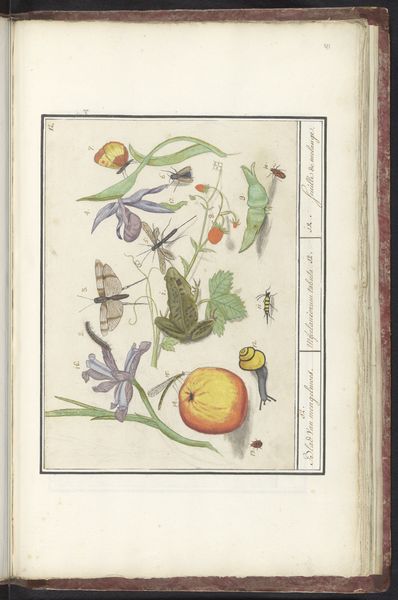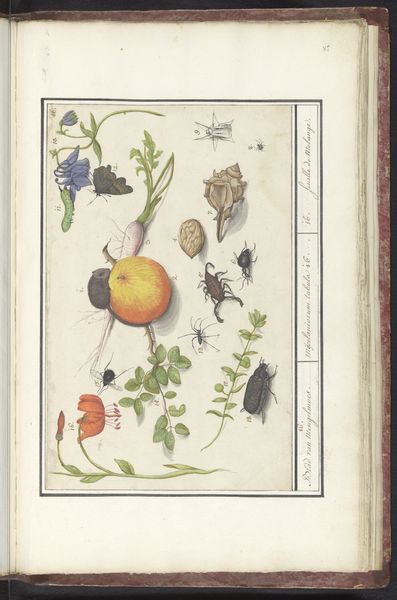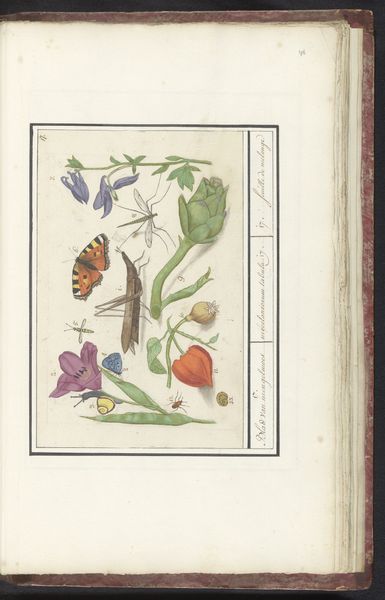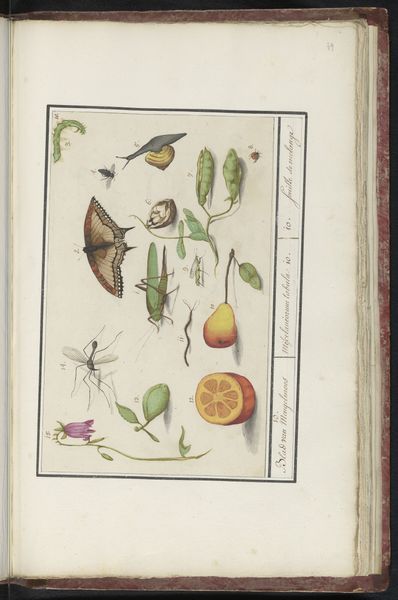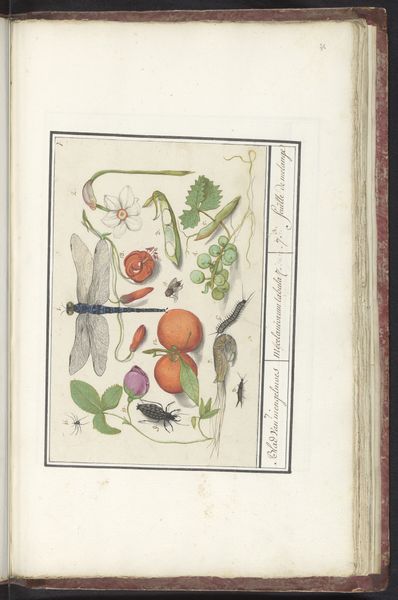
drawing, paper, watercolor, ink
#
drawing
#
flower
#
paper
#
watercolor
#
ink
#
northern-renaissance
#
naturalism
#
watercolor
Dimensions: height 183 mm, width 265 mm
Copyright: Rijks Museum: Open Domain
Editor: This is "Natuurhistorische ensemble (nr. 6)," a natural history composition from between 1596 and 1610, by Elias Verhulst. It's rendered in ink and watercolor on paper, a mix of flora and fauna precisely numbered as if for study. What strikes me is the flatness, almost like a page of specimens pinned down. How do you interpret this work? Curator: It’s crucial to consider the production of images like these in the context of early scientific inquiry and emerging capitalist markets. Natural history illustrations, especially with watercolor and ink on paper, weren’t just aesthetic endeavors; they were tied to the expansion of global trade. Consider who had access to these materials like fine paper and pigments, and what labor extracted them. These illustrations aided in the classification and exploitation of natural resources. Editor: So you're saying the *making* of the image is as important as the image itself? Curator: Absolutely. These drawings represent an attempt to codify and control the natural world through visual representation. The materials employed -- ink, watercolor, paper -- all speak to a system where knowledge and resources were increasingly commodified and circulate within networks of power. Are those specimens destined for a scientific archive, or a wealthy merchant’s cabinet of curiosities, perhaps fueling demand for exotic goods? Editor: That makes me think about the paper it's painted on - the quality, its sourcing. It isn't just a neutral ground. Curator: Exactly. The paper itself represents a level of access and resources, connecting the image directly to economic realities of the time. Its smooth surface enabled such intricate detail. This connects what we often view as art to broader economic structures. Editor: I've definitely learned to look at not only *what* is shown but *how* and *why* it was produced. Thanks! Curator: It’s vital to think of art’s production not as an isolated act, but one deeply enmeshed in the web of materials, labour, and social power.
Comments
No comments
Be the first to comment and join the conversation on the ultimate creative platform.
